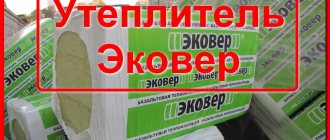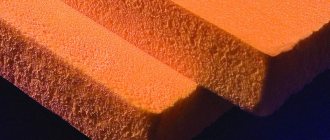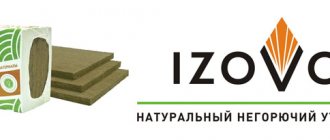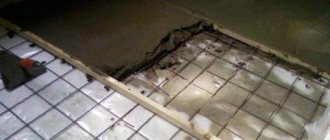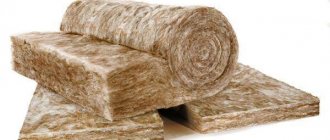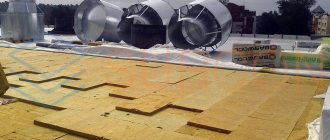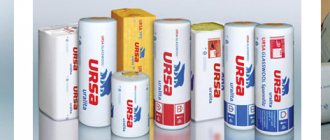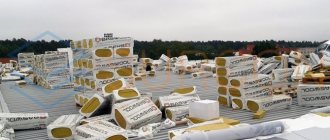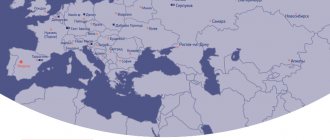One of the best insulation
Penoplex is the most popular thermal insulation material.
Despite the presence of disadvantages, penoplex is the most popular thermal insulation material. It is stronger than polystyrene foam and is absolutely safe for installation. The abundance of extruded polystyrene foam boards on the market allows you to select the required size and thickness, depending on the purpose of use.
Appearance, description
Insulation made of polystyrene, pressed into plates - EPS. The PENOPLEX company was one of the first in Russia to start producing this heat-insulating material. In appearance, extruded polystyrene foam is similar to regular foam, but its structure is denser, the cells are smaller, and the color is orange.
Production technology
To understand what penoplex is, consideration of the method of manufacturing insulation will help, since it is the special technology that gives it the necessary performance qualities.
Unlike the production of pressless polystyrene foam (PSB), penoplex is subjected to pressure and molding. The manufacturing technology is as follows:
- Polystyrene granules are mixed and exposed to high temperature.
- A foaming agent (consisting of freon and carbon dioxide) is added to the fused mixture under pressure, which is responsible for creating small cells.
- The resulting mixture is passed through an extruder for molding.
- The resulting sheets are cooled.
- Cutting into slabs of the required size is carried out.
The finished slabs are wrapped in a special shrink film, which minimizes the negative impact of external factors without blocking visibility for consumers. Through it it is easy to determine what it is and how much the integrity of the material has been preserved.
Types, sizes and weights of thermal insulation boards
The characteristics of insulation depend on its parameters. The slabs are available in various thicknesses and lengths.
When ordering, you can specify your sizes. The manufacturer is able to implement even non-standardized parameters. The main indicators vary within the following limits:
- thickness: 2-10 cm;
- length: 1.2-2.4 m;
- width – 60 cm.
Since the cost of penoplex is considerable, it is better to choose the right thickness and determine in advance the required amount of insulation in order to eliminate excessive costs for thermal insulation of the house.
Features of EPS production
The equipment offered on the market for the production of penoplex differs in price and performance, but the extrusion of foamed polystyrene itself remains unchanged. To produce modern, effective insulation, foamed polystyrene is used as a raw material, which is in the form of balls containing a steam generator. When the raw material is heated, pentane is released with a simultaneous increase in the volume of polystyrene, which, being in special forms, forms EPS blocks.
Existing equipment for the production of penoplex consists of:
- holding bunker;
- crushers;
- pre-foaming agent;
- steam boiler and steam accumulator;
- vacuum installations;
- compressor;
- fan;
- equipment for cutting penoplex is represented by mechanisms that cut blocks into sheets and vertical cutting of blocks.
The presented description is a simplified schematic diagram for the manufacture of insulation from extruded polystyrene foam. Minor changes in the layout allow you to install Penoplex 35 equipment or Penoplex 45 equipment.
Calculation of material quantity
The packaging of penoplex usually indicates the area and volume of insulation, which means that the required amount can be calculated in two ways:
- Calculate the area of the insulated surface. Find out the area of insulation in the package. For example, to insulate 20 m² with extruded polystyrene foam 40 mm thick, 3.2 packages will be required (since the insulation area in the package is 6.24 m², the calculation is as follows: 20/6.24 = 3.2).
- According to the volume of required insulation. To determine the volume of the surface to be thermally insulated, you will need to multiply its area by the thickness of the penoplex. In the case of 20 m², the volume of the insulated surface is 0.8 m³ (20 m * 0.04 m). The volume of one package of penoplex with a thickness of 40 mm is 0.2493 m³. Therefore, for thermal insulation you will need 3.2 packages (0.8/0.2493=3.2).
If during calculations it turns out that a non-integer number of packages is required, then it is better to find a supplier from whom you can purchase the material in separate sheets. This will save money, but you will have to correctly calculate the missing number of slabs.
When purchasing extruded polystyrene foam, it is better to take a small supply of 12 sheets, since unforeseen situations and improper trimming can lead to damage to the material.
Types and what are their differences
Penoplex is a universal material that is used for thermal insulation of various structures. Manufacturers produce several product lines to make it easier for consumers to choose the right material.
Wall
Penoplex Wall is designed for thermal insulation of internal and external structures. Insulating exterior walls is more effective and helps reduce heating costs. This type is also suitable for thermal insulation of partitions and facade systems. A distinctive feature of the slabs is the presence of stripes on the surface, applied with a milling cutter. The rough surface improves the adhesive properties of the insulation, resulting in strong adhesion to the base.
Foundation
Foundations, floors, house paths, and plinths are insulated with Penoplex Foundation material. Its distinctive feature is its high strength, which allows the use of insulation for floors and other structures where there are requirements to withstand significant loads. The slabs have a low moisture absorption coefficient, which is useful because this quality allows you to reliably protect the basement and foundation of the house.
Roof
Extruded polystyrene foam for thermal insulation of flat and pitched roofs has high heat-saving qualities. Recently, the manufacturer has been producing a universal version of Penoplex Roofing and a specialized Penoplex Pitched Roofing, characterized by a longer length and a special tongue-and-groove fastening system.
Slope
Special elements for creating slope and counter-slope structures on roofs, parapets and other protruding structures are presented in the Penoplex Slope line. These extruded polystyrene foam elements have different widths on two sides and provide the required angle.
Block
Penoplex Block consists of several glued polystyrene foam boards.
The increased thickness allows the material to withstand high loads, which is why it is used in road construction.
Comfort
Penoplex Comfort is in demand among consumers. For mansions (balconies, loggias, extensions) and city apartments, this is the most common option, which has important heat-saving characteristics, high reliability, strength and durability. At the same time, the cost of this line is in the average price range. Has an L-shaped edge to prevent the formation of cold bridges.
GEO
Penoplex GEO is an alternative to extruded polystyrene foam for foundations, floors, blind areas and other structures that are subject to heavy loads. Unlike the Foundation line, GEO has greater compressive strength and is more often used in professional construction.
The basis
Penoplex Base has sufficient compressive strength and is considered a universal heat insulator, as it can be used for walls, floors, roofs, provided there are no heavy loads. In all respects, this line is close to Penoplex Comfort, but the Base is more often used in professional construction, and Comfort in domestic construction.
Facade
An improved option for walls, which can be used for insulation outside, inside, and also be part of facade systems. Penoplex Facade has characteristics similar to the Wall line. It has an L-shaped edge, which guarantees the absence of through seams.
Penoplex insulation: types and sizes of thermal insulation boards
Manufacturers produce foam sheets, the size and specific density of which are indicated on the packaging and determine the limits of use of the material. The following types of slabs are available:
- For walls . Plates with a density of 25-32 kg/m3 are used to insulate the facade (due to the low vapor permeability of the material, additional vapor barrier of the interior will be required). When externally insulating a non-residential building, a vapor barrier is not required. Finally, you can plaster over a metal mesh, or cladding with a façade material of your choice (lining, siding, ceramic tiles).
- For roofing . It is known that up to 20% of heat is lost through a poorly insulated roof. Penoplex "Roof" is designed specifically for thermal insulation of roofs, pitched or flat. Lightweight and moisture-resistant slabs with a density of 28-33 kg/m3 are simply joined together without the formation of cold bridges. The material is rigid enough to withstand significant installation and operating loads; it is equipped with a groove that ensures a tight fit.

Packaging marking
- For the foundation . The increased density of the slabs (29-33 kg/m3) allows them to be used for arranging the foundation, ground floor, garden paths, insulating septic tanks and utilities.
- Penoplex "Comfort" . Sheets with a density of 25-35 kg/m3 have an L-shaped edge, so they can be installed without any problems. Thermal insulation boards are widely used in private housing construction (including insulation of baths, saunas and swimming pools), as well as for high-quality insulation of apartments (especially loggias and balconies).
- Penoplex 45 (GEO) . High-density (35-47 kg/m3) material, suitable for use under constant heavy loads. It is used for insulation of runways, roads (roads and railways), exploited roofs, parking lots and pedestrian areas.
There are calculation tables for various regions that determine the choice of foam sheets; the thickness in them is a key indicator. The most commonly used plates are 20-100 mm thick. Depending on the brand, the length varies between 1200-2400 mm, the width is always the same - 600 mm. The number of slabs in a package can vary from 4 to 18 pieces.
Details about the characteristics
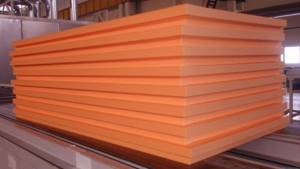
Extruded polystyrene foam has gained popularity due to its excellent performance and quality characteristics. In many respects, the insulation is superior to all known thermal insulation materials.
Coefficient of thermal conductivity
Low thermal conductivity allows for effective insulation. The coefficient is almost 10 times lower than that of high-quality mineral wool. Penoplex has a thermal conductivity coefficient at 25±5°C of 0.032 W/(m•°K).
Low vapor permeability
The vapor permeability of the material is almost zero.
This allows for better thermal insulation, but can lead to condensation, so it is not recommended to use penoplex when insulating baths and saunas.
Moisture resistance
The material has a high moisture resistance, which allows such insulation to be carried out without additional waterproofing. Moisture absorption is practically zero.
Long service life
The manufacturer claims a minimum service life of 50 years. However, there is no exact data available, since extruded polystyrene foam has been produced for insulation only since 1998.
Compressive strength
The compressive strength of extruded polystyrene foam is high. The indicator varies depending on the line of material. On average, the compressive strength of penoplex is 0.25-0.5 MPa. The higher the number, the greater the load the insulation will withstand.
Environmental friendliness
Despite the fact that the insulation is made from polymers, it does not harm the environment because it does not react with aggressive substances. Only when burning can harmful smoke be released, which can harm a person. Otherwise, penoplex does not harm a person. use during insulation does not require the use of personal protective equipment.
Fireproof properties
According to the flammability class, the material belongs to highly and moderately flammable (G3-G4). In this case, penoplex burns only when exposed to direct fire. In other situations, it smolders and is not able to sustain combustion on its own. Manufacturers strive to reduce the flammability of insulation by adding fire retardants.
Advantages and disadvantages of Penoplex insulation
Like any building material, penoplex has its strengths and weaknesses. Knowledge of the characteristics of the material will allow you to use it with maximum efficiency; Positive characteristics include the following parameters:
- Low thermal conductivity . The thermal conductivity coefficient does not exceed 0.03 W/m·ºK, which indicates a high degree of thermal insulation.
- Low water absorption . 0.5% by volume per month.
- High compressive and bending strength - 0.27 MPa. This property allows the slabs to be used not only as insulation, but also as a building material that is not subject to structural cracking.
- Light weight . Due to its low density, the material does not create a load on the supporting elements.
- Wide range of operation . The material does not lose properties in the range from -50 to +75°C.
- Durability . The service life is 30-50 years.
- Easy installation.

Thermal insulation properties of plates in comparison with other materials
In order for penoplex to bring the expected benefits, you should also remember the disadvantages (and take them into account):
- Low vapor permeability . The indicator is worse than that of polystyrene foam, which makes you think about a good ventilation system.
- Flammability . Belongs to class G3-G4 (normally and highly flammable substances).
- Environmental friendliness . The material is safe for health if it does not contain harmful impurities. The existing variety is self-extinguishing polystyrene foam, impregnated with a fire retardant and can have a negative impact on humans.
- Extremely low sound insulation .
- UV instability . It is destroyed by exposure to sunlight and needs protection during storage.
- Instability to a number of organic solvents and other substances. These include gasoline, diesel fuel, oil paints, polyester resins, aromatic hydrocarbons, and ethers.

Work on insulation of complex-shaped facades
Scope of application
Performance characteristics allow the use of polystyrene foam in various situations, both in domestic and industrial construction.
Insulation of façade walls from the outside
External wall insulation is considered the most effective. To do this, use the material of the Base or Wall ruler. Thermal insulation of external walls allows you to significantly save on heating costs in winter.
Insulation of the walls of a balcony or loggia
High heat-saving characteristics make it possible not only to insulate a balcony or loggia using penoplex, but also to make it an extension of the apartment, increasing the usable area of the room.
Roof thermal insulation
The roof is insulated using extruded polystyrene foam both from the inside and outside. At the same time, it is possible to combine various materials for external and internal thermal insulation to achieve a better result. Penoplex is ideal for both flat and pitched roofs.
Thermal insulation of concrete floor
Strength indicators allow the material to be used for floor insulation on concrete screed. This is also facilitated by low moisture and vapor permeability.
All about using Penoplex slabs
Almost no private or industrial construction can be completed without the use of this effective insulation.
Extruded polystyrene foam Penoplex, like Styrofoam XPS, is intended for high-quality thermal insulation of a wide variety of buildings, objects and structures:
- roads;
- engineering structures;
- foundations;
- basements;
- floors;
- walls;
- floors.
Adhesive properties and durability allow the material to be successfully used in conditions of high humidity, where other thermal insulation materials cannot cope.
In addition, we offer insulation materials specially developed by Penoplex manufacturers for thermal insulation of various enclosing structures: PENOPLEX®ROOF, PENOPLEX®WALL and PENOPLEX®FOUNDATION.
Attention!
Penoplex will serve you
5 times longer than
thermal insulation made from ordinary polystyrene foam, and the insulation result will be
1.5 times better
!
Installation technology
There are several options for installing penoplex. Which one is better depends on the type and location of the insulated surface.
On glue
Special glue is applied to the surface of the base, after which the foam board is pressed tightly against it.
Fungus on dowels
The dowels securely fix the slabs if the installation rules are followed. It is important to correctly determine the required quantity. Dowel mushrooms (umbrellas) are used to fasten all the joints of the sheets, and two fasteners are also fixed in the middle of the slab.
On the foam
There is a special foam on the construction market that ensures reliable fastening of the penoplex to the base.
When insulating, it is better to combine options and use an adhesive base together with fastening dowels, especially for vertical bases.
Installation of insulation
For interior work, penoplex is an invaluable material, since due to its low weight, small thickness of the slabs and ease of cutting, it is easy to work with.
Stages of installation work:
- preparation, cleaning and leveling of walls;
- planting on an adhesive base, and then nailing foam sheets;
- strengthening with a reinforcing layer;
- leveling the surface of the structure;
- finishing.
In addition to excellent thermal insulation qualities, penoplex is an excellent sound absorber. A wall covered with it will become a reliable barrier not only to the cold, but also to extraneous sounds.
Domestic analogues of the material
Domestic manufacturers produce extruded polystyrene foam, whose characteristics are not inferior to penoplex. At the same time, the cost of insulation differs, and you will be able to save money if you purchase an analogue.
Technoplex
Manufacturer TechnoNIKOL supplies Technoplex extruded polystyrene foam to the construction market. This insulation has greater heat-saving ability, since the manufacturer included graphite particles in the composition. But penoplex can withstand heavy loads.
Polyspen
According to the stated characteristics, Polyspen and Penoplex are similar. The first also presents several lines of material with different densities. At the same time, users note that the structure of materials with the same density parameter is significantly different and Polyspen is inferior to Penpolex.
Useful tips
Insulation using extruded polystyrene foam is effective and simple.
In order for the result to meet expectations, the main advice of professionals is to purchase high-quality thermal insulation materials from trusted suppliers and carry out insulation taking into account the rules and requirements.
By choosing the right adhesive mixture and calculating the required thickness of the insulation, using penoplex you can create a comfortable atmosphere in the house and additional protection outside. Moreover, such insulation will last more than half a century without loss of performance characteristics.
Foamed polystyrene extrusion technology
Foaming of polystyrene granules is the initial stage of production, which must be provided by equipment for penoplex. Thanks to a special substance (porophore) and the supply of saturated water steam, a micro-cellular structure is created in solid polystyrene. This stage is carried out with constant stirring, which prevents the granules from sticking together.
The next important stage is the diffusion of raw materials, as a result of which air enters the granules. The granules with air enter the extruder, where they melt under the influence of temperature, and special additives are added to them to ensure the thermal and operational characteristics of extruded polystyrene foam. The formed strip of foamed intermediate material enters special equipment for cutting the insulation in accordance with the manufacturer's company standards.
